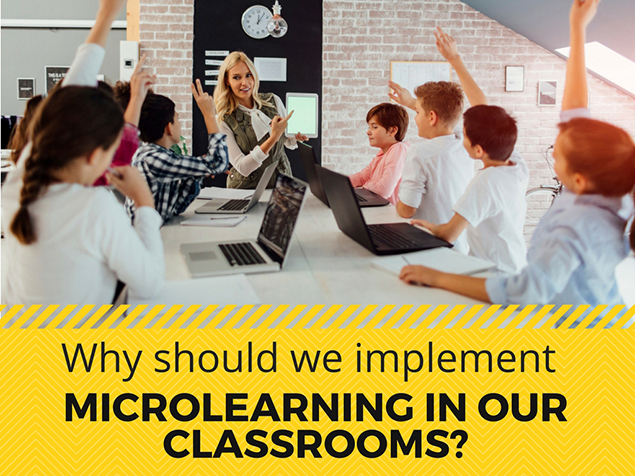Microlearning in the Classroom
Posted by Network Support · Leave a Comment
Microlearning in the Classroom
Microlearning, as the name implies, is learning that occurs in small chunks, and in a short span of time. This student-centric learning strategy can be implemented as formal structured teaching programs or informal self-directed learning programs.
Microlearning is characterized by features such as:
- Short Activities: Students often get the most out of lessons when they cater to their attention spans. Therefore, microlearning focuses on providing learning in short bursts of time (3-5 minutes), and including learning activities that can be quickly completed.
- Small Chunks: In microlearning, material is presented in small chunks to help improve student comprehension, and to enhance retention and recollection of information. The microlearning module focuses on a subsection of a topic instead of the whole topic.
- Learning Objectives: Microlearning focuses on one learning objective at a time.
- Variety: The content for microlearning can be presented using multimedia tools in different formats, adding variety to the learning process.
- Mobile Learning: Students can easily access microlearning modules using their smartphones and other digital devices.
Benefits of Microlearning
The short and chunked presentation model, use of multimedia tools, and availability on digital devices makes microlearning a useful and effective learning tool as it:
- Captures and maintains student attention
- Increases interest in the content
- Enhances retention and recollection of information
- Addresses different learning styles
- Increases accessibility
- Provides just-in-time learning experience to the students.
However, the strategy does have some negatives such as:
- Confines learning to a narrow view and prevents a holistic viewing of the topic. This makes it more difficult for students to relate the subtopics to its whole.
- Use of too many digital tools and formats may make the presentation confusing for students.
Application of Microlearning strategy
These are some ways of implementing the strategy in the classroom:
- Flipped classroom learning: Students can access the modules outside class hours and use class hours for discussions and practical work
- Supplementing courses: The modules can be created to strengthen learning, and used to enable students to retrieve information from within the lecture or post lecture session.
- Assessment activities: Microlearning modules can be short activities that help teachers evaluate whether learning has occurred in the classroom
Like this article for teachers?
Browse the Professional Learning Board COURSE CATALOG to find related online courses for teachers in your state. Professional Learning Board is a leading provider of online professional development classes that teachers use to renew a teaching license or renew a teaching certificate.





